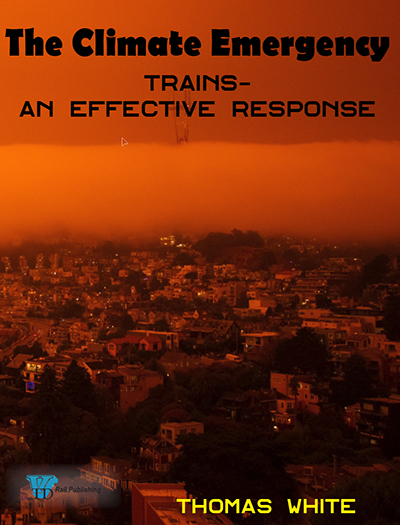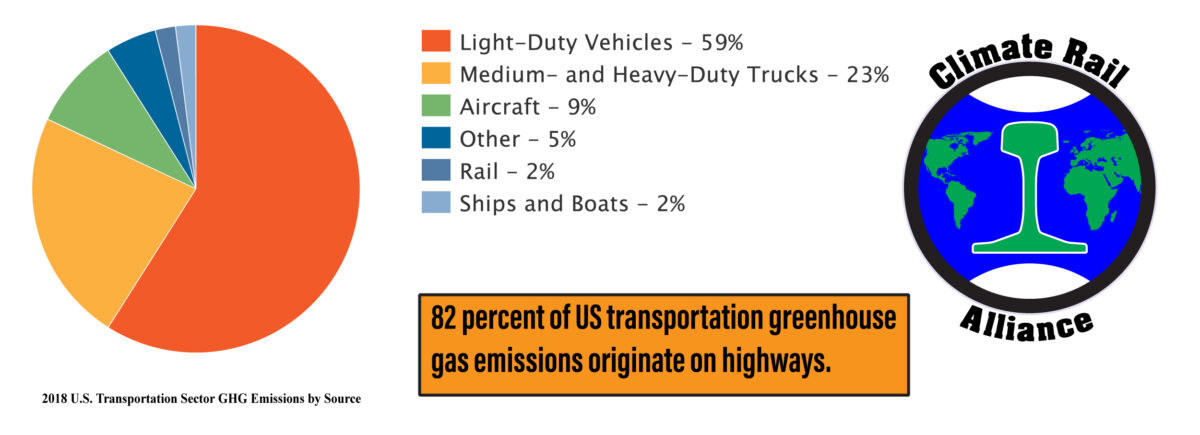Trains-An Effective Response
Global warming and climate change are two terms for the same phenomenon. The temperature of the planet is steadily increasing. That doesn’t mean that winter doesn’t happen. The earth will still have parts that are colder and wetter than others. Some places will still be hot in the summer and cold in the winter. But the global temperature increase is changing the patterns to which we have become accustomed. Summers can be ‘unseasonably’ hot and dry, winters can be ‘unseasonably’ cold and wet. Summer might act like winter. Winter might act like summer. These changes have been going on for long enough that they can no longer be called unseasonable.
Global warming became climate change to offset criticism that some places still have winter and some have more severe winter than ever before. That point of view is a local perspective. However, averaged globally, the temperature of Earth’s atmosphere is rising.
The connection between human activity and global warming has been documented for over 80 years. Conditions now meet or exceed projections of severity that were made decades ago.
Humans can adapt to many changes, but climate change cannot be one of them. As human activity continues to fuel the fires of climate change, its severity increases. Our climate will eventually reach the point of being beyond adaptability. There is already ample evidence of cataclysmic change: drought, floods, fires, extreme heat, and extreme cold. The number of hurricanes is increasing. They are more severe than in the past. People are killed or displaced by floods, wildfires, or hurricanes: people are hospitalized, or die, from simple temperature extremes. If we don’t stop this trend, more places will become unlivable, and more people will die.
For some, the change has been uncomfortable. For many, the change has been life-changing, life-threatening, or lethal. That will be the story for an increasing number of people if the trend isn’t stopped.
Railroads are an important part of stopping climate change. To an average person in the US, that doesn’t make sense. Everyone knows trains are big, slow, have polluting diesel locomotives, and carry coal, oil, and other freight that contributes to climate change. In most of the country, if there is a train for people to ride, it is not a viable alternative to driving. However:
- Trains use two-thirds less energy (fuel) than highway transportation and produce two-thirds fewer emissions.
- Highway transportation produces 82 percent of transportation greenhouse gas emissions. Rail transportation produces two percent.
Trains appear to be making a greater emissions because the power to move the contents of hundreds of cars or trucks is concentrated in one place. The appearance is deceptive.
The US is decades behind the rest of the world in the use of rail transportation. The belief that trains have limited usefulness is a uniquely American perspective, a result of American politics and business practices, rather than any technical limitation. These political and economic limitations must be overcome, so that a transition from road to rail can be made quickly.
A United Nations study stated that we have until 2030 to reduce greenhouse gas emissions by half. That can only be done by taking drastic measures. This book addresses the urgently needed rail transportation measures needed to meet the challenge.
Get the book. Learn about rail as a climate emergency response.
TAW
